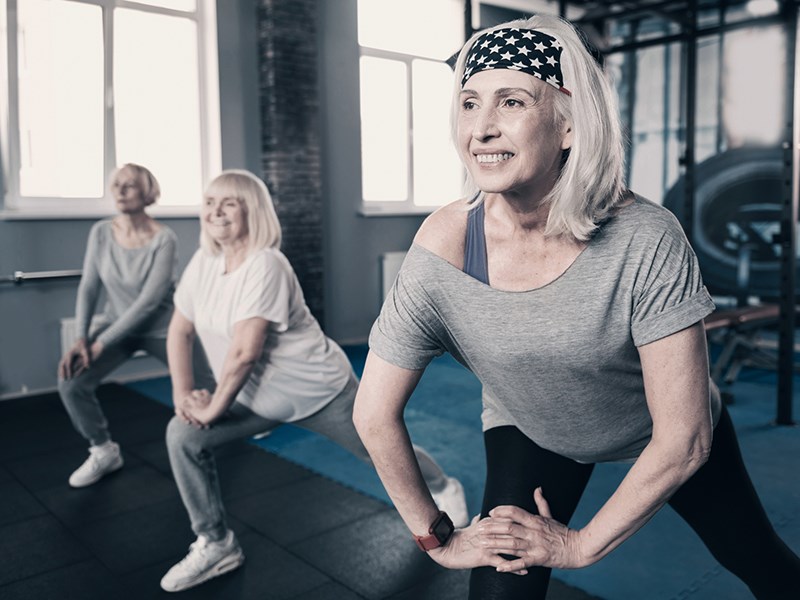Functional, fundamental, foundational, or primal. Whatever you want to call them, the seven basic movement patterns are movements we use every day.
The squat, lunge, hinge, twist, push, pull and gait should be a focus of training, for both gym and everyday life success. Squatting to the couch, hinging to pick something up off the floor, pulling the car door open; these are the patterns we use constantly, so we should spend some time on them, to form a strong and stable base.
Working on these patterns during our workouts will not only improve our movement in “real life,” they will also reveal weaknesses, instabilities, or alignment issues that we can correct, potentially ridding ourselves of pain, and avoiding possible injury.
Foundational movements are just that; they are patterns that engage your whole body, and can get you out of our often stationary lifestyles. The body was made to move. And although it may not seem like it, the movement patterns for picking up your kids and playing at the park, sprinting down a track, deadlifting and lunging, are not all that different.
The compound nature of functional movements, working more than one muscle group at a time, is a more holistic, and perhaps dynamic, approach to movement. They can help with neuromuscular control, core stability, balance and mobility, in a very “real world” transferrable way.
On top of that, these movements help to challenge your brain, and keep you engaged and focused, especially when you are working hard at the gym.
Agatsu president Shawn Mozen has said, “You don’t get stronger by trying to jump past weaknesses.”
We usually see our goal, and want to be there, right now. And to get there, we’ll push through restrictions, pain, and sacrifice our form and bodies just to do it. I often wonder why. If we found more enjoyment in just moving, and in the journey to our goals, maybe we wouldn’t be so rushed to the end.
Working with the seven foundational movements will help to create a stable base of fitness. From there, find quality of movement and the rest will come with patient practice. The seven foundational movements are the platform upon which you can build toward your goals.
Spend some of your training time on these seven functional patterns.
Squat: Bend your hips and knees at the same time, lowering your hips down, keeping your chest up. You can add resistance to the squat with weights, bands, or you can work on explosive power with jumps. Many of us have tight hips from a lot of sitting, and this will restrict your squat. Make mobility a training priority.
Lunge: Step forward and bend one leg, while leaving the other leg in place, bending at the knee. Knees under hips and a tall body will go a long way to preserving power and stability in your lunge.
Hinge: Bend your torso at your hips, lowering toward the ground, as in a deadlift. The movers here are your gluteals, hips and hamstrings. Make them do the work instead of your lower back.
Push: Pushing an external weight away from your body, or your centre of mass away from the ground. A great example is the push-up. We can do vertical pushing, like a shoulder press where the weight comes directly overhead, or horizontal pushing, like that of a chest press, where the weight is lifted perpendicular to our bodies.
Pull: Pulling an external weight to your body, or pulling your centre of mass toward an object. We can do vertical pushing, like that of a pull-up, or horizontal pushing, like that of a bent-over row.
Twist: Moving the body on the transverse plane, as in, side to side. Reaching across your body, throwing a ball, or playing golf are twisting patterns. Because we look forward, we often forget about twisting or side to side movement. It is a great pattern to train stability.
Gait: Walking, jogging and sprinting are all examples of gaits. It is any motion that propels the body. We can use the other six movements here, in combination, to propel the body in interesting and challenging ways.
Do what you can with what you have where you are, and always prioritize the positive.
Melissa Sloos is a certified group fitness instructor, spin instructor and co-owner at Coast Fitness.



